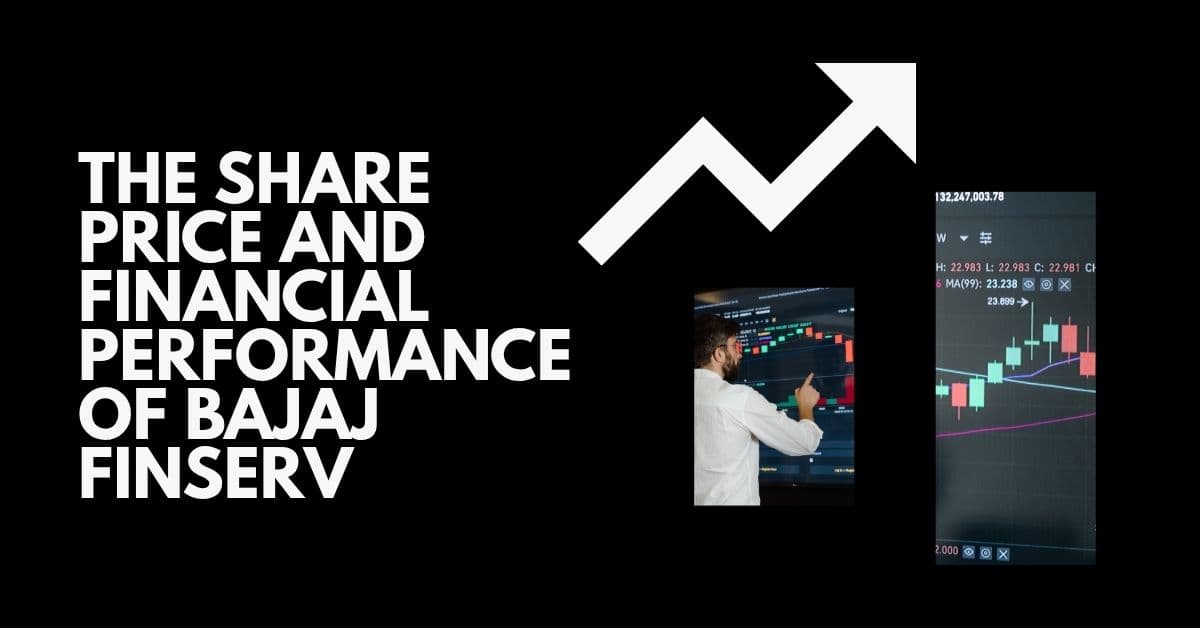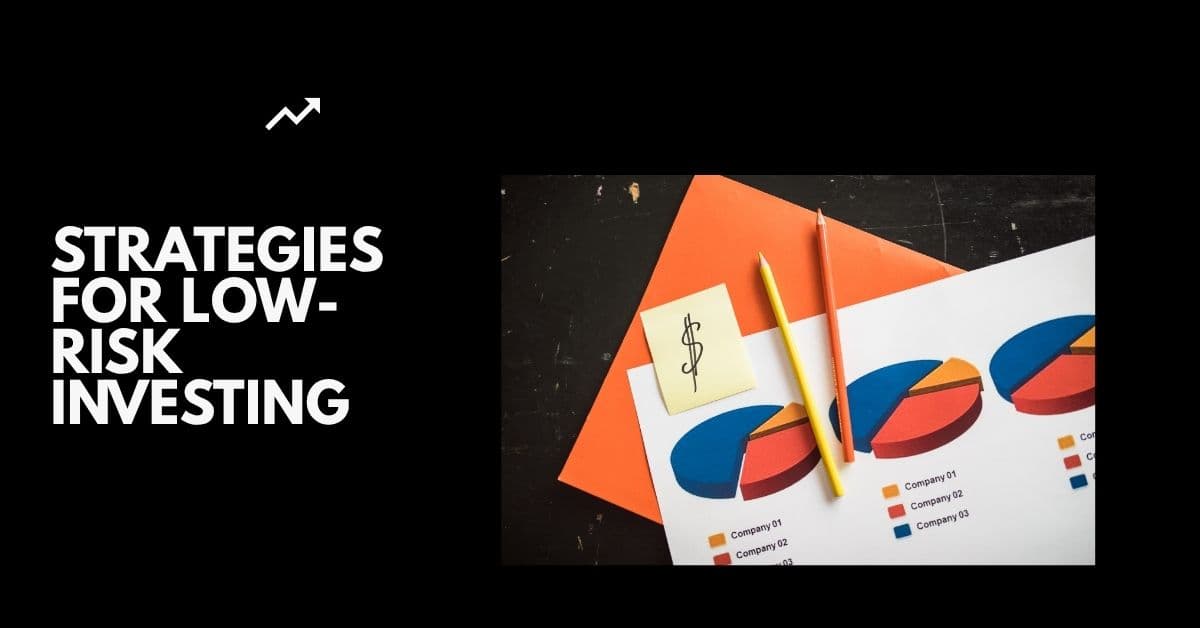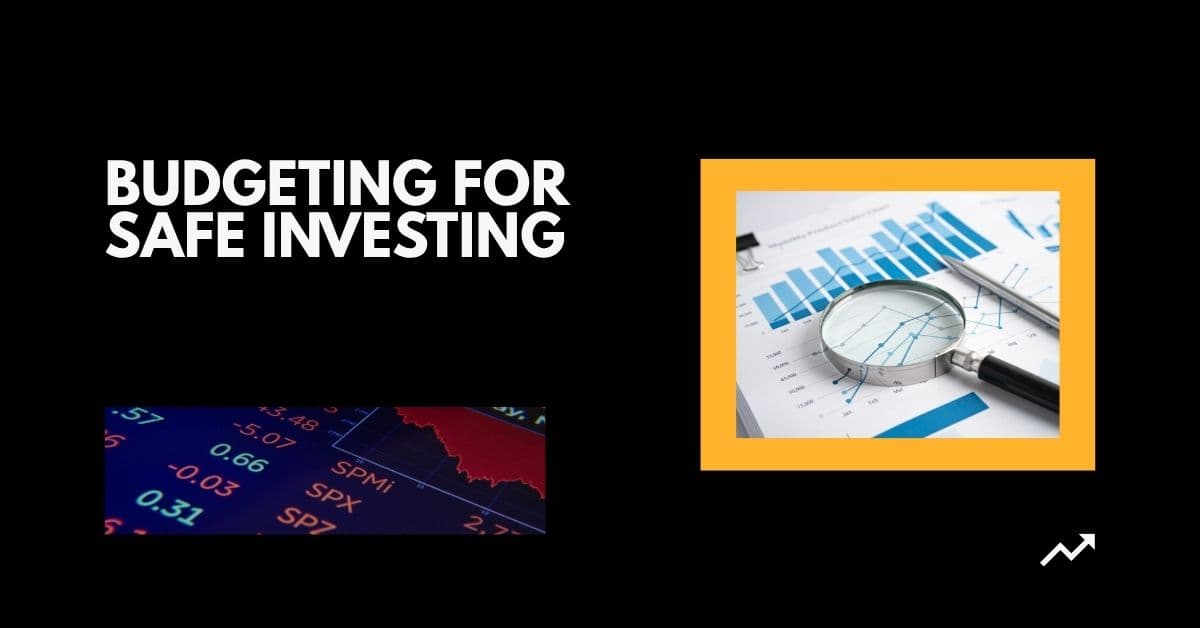Bajaj Finserv Share: With its diverse portfolio and strong growth, Bajaj Finserv Limited, a dominant force in India’s financial services industry, has drawn the interest of investors. With a market valuation of ₹3,14,817 crore as of May 12, 2025, its share price is up 29.3% over the previous year at about ₹2,036.75 on the NSE. Driven by a strong demand for financial services, the company, which is well-known for its subsidiaries like Bajaj Finance (lending) and Bajaj Allianz (insurance), recorded a 24% increase in net profit to ₹2,153 crore in Q2 FY24. Bajaj Finserv provides a steady, low-risk way for newcomers in India to accumulate wealth, but success calls both self-control and smart planning. This article offers helpful budgeting advice, low-risk Bajaj Finserv investment ideas, and important insights to help you build wealth in 2025 while maintaining financial stability and avoiding excessive risk.
Understanding Bajaj Finserv
Bajaj Finserv, the holding company for the financial services of the Bajaj Group, was established in 2007 and has its headquarters in Pune. It operates through the following important subsidiaries:
- Bajaj Finance Limited (BFL): The top NBFC in India, Bajaj Finance Limited (BFL), with assets under management (AUM) close to ₹3 lakh crore and provides consumer loans, mortgages, SME loans, and other services.
- Bajaj Allianz General Insurance (BAGIC): Provides motor, health, and property insurance, with a concentration on tier-2 and tier-3 markets.
- Bajaj Allianz Life Insurance (BALIC): Offering both health and life insurance, Bajaj Allianz Life Insurance (BALIC) had a 63% increase in premiums in Q4 of FY21.
- Bajaj Finserv AMC: With an emphasis on digital innovation, Bajaj Finserv AMC manages mutual funds and SIPs.
- Other ventures: Include wealth advisory services and wind power (138 windmills with a 65.2 MW capacity).
Compared to businesses in a single industry, Bajaj Finserv’s diversified business model, which includes lending (45% of FY22 revenue), general insurance (28%), and life insurance (25%), lowers risk. With 29 AI use cases predicted to save ₹1.5 billion in FY26, its digital transformation—which includes AI-driven operations and a multi-cloud architecture—positions it for future growth.
The share price and financial performance of Bajaj Finserv
With a 52-week range of ₹1,419–₹2,134.5 and a P/E ratio of 201.9, Bajaj Finserv’s share price as of May 12, 2025, is ₹2,036.75, suggesting strong growth prospects. FY25’s major financial highlights include:

- Revenue: Increased from ₹1,10,381.91 crore in FY24 to ₹1,33,821.05 crore.
- Net profit: The net profit increased by 12.5% from ₹15,587.27 crore to ₹17,539.65 crore.
- EPS: ₹55.60, indicating a strong increase in earnings.
- Debt-to-Equity Ratio: Better financial health is indicated by the debt-to-equity ratio, which increased from 4.77 to 1.82.
- ROE: 12.25%, which is in line with past results.
The main value generator, Bajaj Finance, recorded a 21.28% YoY increase in consolidated revenues to ₹19,523.88 crore in Q1 FY26 (April–June 2025), but its shares dropped 5.31% as a result of growing non-performing assets (NPAs) (gross NPA at 1.1%). Bajaj Housing Finance’s recent initial public offering (IPO), which raised ₹65.6 billion, increased investor confidence and helped the share price rise 3% on September 2, 2024.
| Metric | Value |
| Share Price (May 12,2025) | ₹2,036.75 |
| 52-Week Range | ₹1,419-₹2,134.5 |
| Market Cap | ₹3,14,817 crore |
| P/E Ratio | 201.9 (Sector: ~30) |
| Dividend Yield | ~0.05% |
| Debt-to-Equity Ratio | 1.82 |
| ROE | 12.25% |
Forecast for Share Prices in 2025
The share price of Bajaj Finserv is predicted by analysts to fluctuate in 2025:
- High Estimate: ₹2,565, spurred by the expansion of insurance and digital innovation.
- Low Estimate: Taking competitive and regulatory risks into account, the low estimate is ₹1,560.
- Average target: The average target price of ₹2,062.50 indicates a ~1.3% increase from ₹2,036.75.
- Analyst Opinion: Citing strong credit momentum and cross-sell synergies, Sharekhan suggests a “Buy” with a target of ₹2,350. Nevertheless, excitement is dampened by a high P/E (201.9) and growing costs in Q4 FY25 (stock fell 1%).
With an emphasis on multi-engine growth and an AUM approaching ₹3 lakh crore, posts on X demonstrate an optimistic outlook and position Bajaj Finserv for long-term ROE growth. More information will be available in the Q1 FY26 earnings report, which will be presented on July 25, 2025.
Why Make a Bajaj Finserv Investment?
The following factors make Bajaj Finserv appealing for low-risk wealth building:
- Diversified Portfolio: By exposing investors to wealth management, insurance, and financing, sector-specific risks are decreased.
- Strong financials: steady revenue growth (21% CAGR) and profit expansion (35% CAGR over 10 years).
- Digital Innovation: Competitiveness is ensured by cybersecurity efforts, AI, and green finance (a portfolio worth ₹20 billion by FY26).
- Market Leadership: Growth is fuelled by Bajaj Finance’s extensive presence (4,259 lending outlets) and 92 million customers (with an aim of 200 million by FY29).
- Stable Leadership: Continuity is ensured by Anup Kumar Saha’s nomination as Bajaj Finance MD, effective April 2025.
Risks, however, include competition from banks with stronger distribution networks, regulatory changes, and expensive valuation (P/E 201.9).
Strategies for Low-Risk Investing
Use these strategies to increase your money with Bajaj Finserv without taking on too much risk:

1. DCA, or dollar-cost averaging
To average out expenses and reduce the impact of volatility, invest a set amount each month (for example, ₹2,000) regardless of the share price. In contrast to a lump-sum investment at a peak, ₹2,000 every month at ₹2,036.75 can purchase around 11.8 shares over the course of a year, reducing risk.
2. Diversify Your Portfolio
Limit Bajaj Finserv to 5–10% of your portfolio to reduce sector risks. Balance with:
- Mutual Funds: Use Groww to invest in large-cap or Nifty 50 index funds.
- Fixed deposits: Earn 6–8% on fixed deposits with banks such as HDFC Bank.
- Sovereign gold bonds: Offer a 2.5% interest rate, making them an excellent inflation hedge.
3. Long-Term Holding
Long-term capital gains (LTCG) tax is 12.5% (above ₹1.25 lakh) for shares held for more than a year, while short-term gains (STCG) tax is 20%. Compared to ₹10,000 for six months, a ₹50,000 gain after 13 months results in ₹3,125 in tax (if over ₹1.25 lakh).
4. Keep an eye on the basics
Use Moneycontrol or Screener to keep tabs on Bajaj Finserv’s profits, AUM growth, and non-performing assets. Caution may be indicated by regulatory changes or an increase in NPA (1.1% in Q1 FY26).
5. Harvesting Tax Losses
Sell investments that are losing money to offset gains. For example, if a ₹10,000 loss elsewhere is offset by a ₹20,000 gain from Bajaj Finserv, the taxable gains are reduced to ₹10,000, saving ₹1,250 (LTCG) or ₹2,000 (STCG).
Budgeting for Safe Investing
You can invest in Bajaj Finserv without worrying about money if you have a good budget:

1. Follow the 50/30/20 rule
Set aside 20% of income for savings and investments, 30% for wants (leisure), and 50% for requirements (rent, EMIs). Set aside ₹10,000 for savings out of a monthly income of ₹50,000, and add ₹1,000 to ₹2,000 for Bajaj Finserv.
2. High-interest debt that is clear
Pay off personal loans (10–20%) or credit cards (20–40%) initially because their expenses are greater than Bajaj Finserv’s possible profits (~10–15%). A ₹1,500 gain from a ₹10,000 investment at 15% is much outweighed by the ₹18,000 saved yearly by paying ₹5,000 a month on a ₹50,000 credit card at 36%.
3. Establish an Emergency Fund
Save three to six months’ worth of spending (₹1.5 to ₹3 lakh for monthly expenses of ₹50,000) in a high-yield savings account to prevent selling shares during falls, such as the 5.31% drops in Bajaj Finance’s stock in July 2025.
4. Start Small
To reduce risk, invest between ₹5,000 to ₹10,000 (2–5 shares at ₹2,036.75). For cheap broking costs, use sites like Groww or Zerodha.
5. Track Expenses
Reduce non-essentials (such as subscriptions) to free up ₹500 to ₹1,000 each month by using apps like Money View or Walnut to track spending. This guarantees steady investments without breaking the bank.
For Indian investors, smart budgeting techniques might result in safer investing practices and higher savings. Allocating ₹10,000 from a ₹50,000 monthly income in accordance with the 50/30/20 rule guarantees steady investments and a balance in spending. Setting high-interest debt repayment as a top priority, like paying off ₹50,000 in credit card debt, can result in yearly savings of up to ₹18,000, which is more than average stock market returns. Establishing a ₹1.5 lakh emergency fund helps prevent asset sales during market downturns. Beginners can manage risk while entering the market by starting small, such as investing ₹5,000 in two Bajaj Finserv shares. Monitoring spending with apps like Money View can reveal savings of over ₹1,000 per month, which can then be used for investments.
Risks To Consider
Despite Bajaj Finserv’s stability, there are still risks:
- High Valuation: A P/E ratio of 201.9 indicates overvaluation, which raises the likelihood of a drop in growth.
- Growing NPAs: Stress in unsecured loans was reflected in Bajaj Finance’s gross non-performing assets (NPA), which increased to 1.1% in Q1 FY26.
- Regulatory Changes: Profitability may be impacted by stricter NBFC laws or insurance standards.
- Competition: The expansion of insurance is hampered by banks with strong distribution networks.
- Market volatility: Sensitivity to profit shortfalls is demonstrated by a 1% decline following Q4 FY25 reports.
How to Invest in Bajaj Finserv?
- Create a Demat Account: Use digital KYC to register with Groww, Upstox, or Zerodha.
- Fund Your Account: Use net banking or UPI to transfer money.
- Search for BAJAJFINSV: Using the NSE/BSE ticker ‘BAJAJFINSV’.
- Make a Purchase: Select a market order or a limit order (for example, ₹2,000).
- Monitor Performance: Keep an eye on performance by following news and pricing on Moneycontrol or NSE India.
Frequently Asked Questions (FAQs)
1. What is the current share price of Bajaj Finserv?
It is trading at ₹2,036.75 on the NSE as of May 12, 2025.
2. Can beginners safely use Bajaj Finserv?
It is rather safe due to its broad portfolio and solid financials, but to reduce risks, diversify and start small.
3. How can I make risk-free investments?
Hold for a long time, diversify with fixed deposits or mutual funds, and use dollar-cost averaging. Prioritise paying off high-interest debt.
4. What drives the growth of Bajaj Finserv?
Its growth is driven by digital innovation, AUM growth, and the demand for lending and insurance services.
5. How can I create an investment budget?
Use apps like Money View to keep tabs on spending, establish an emergency fund, and abide by the 50/30/20 rule.
An Example from Real Life
Situation: Priya, a thirty-year-old Bengaluru professional who makes ₹50,000 a month, wishes to invest in Bajaj Finserv.
- Action: Priya saves ₹18,000 a year by paying down her ₹50,000 credit card debt at a rate of 36%. After creating an emergency fund of ₹1.5 lakh, she uses Groww to invest ₹5,000 (2 shares at ₹2,036.75). She uses Money View to keep tabs on her spending and initiates a ₹2,000 monthly SIP in a Nifty 50 fund. At ₹1,894.18, she establishes a 7% stop-loss.
- Results: Her investment increases to ₹5,700, a ₹700 gain (14%), if Bajaj Finserv reaches ₹2,350 by December 2025. Her low-risk, diversified strategy guarantees financial stability.
Conclusion
As of May 12, 2025, Bajaj Finserv’s share price was ₹2,036.75. Its diverse range of financial services provide beginners with a solid foundation on which to create wealth. You can invest safely by prioritising budgeting tasks like paying off high-interest debt and creating an emergency fund, and by implementing low-risk strategies like dollar-cost averaging, long-term holding, and diversification. To match your investments with your objectives, start with ₹5,000 to ₹10,000 using Groww or Zerodha, keep an eye on Moneycontrol updates, and speak with a financial counsellor. With Bajaj Finserv, discover the keys to accumulating wealth now and safeguard your financial future in 2025.
Disclaimer: Investing in the stock market is risky. Performance in the past does not guarantee future outcomes. Before making an investment, speak with a knowledgeable financial counsellor. This article is only meant to be instructive.
Struggling to Save from Your Monthly Salary? Try These 5 Easy Hacks
Silver Price Today – 5 Smart Ways to Save on Your Next Purchase
TCS Share Price Target 2025 – Save Smart Now or Regret Later!

